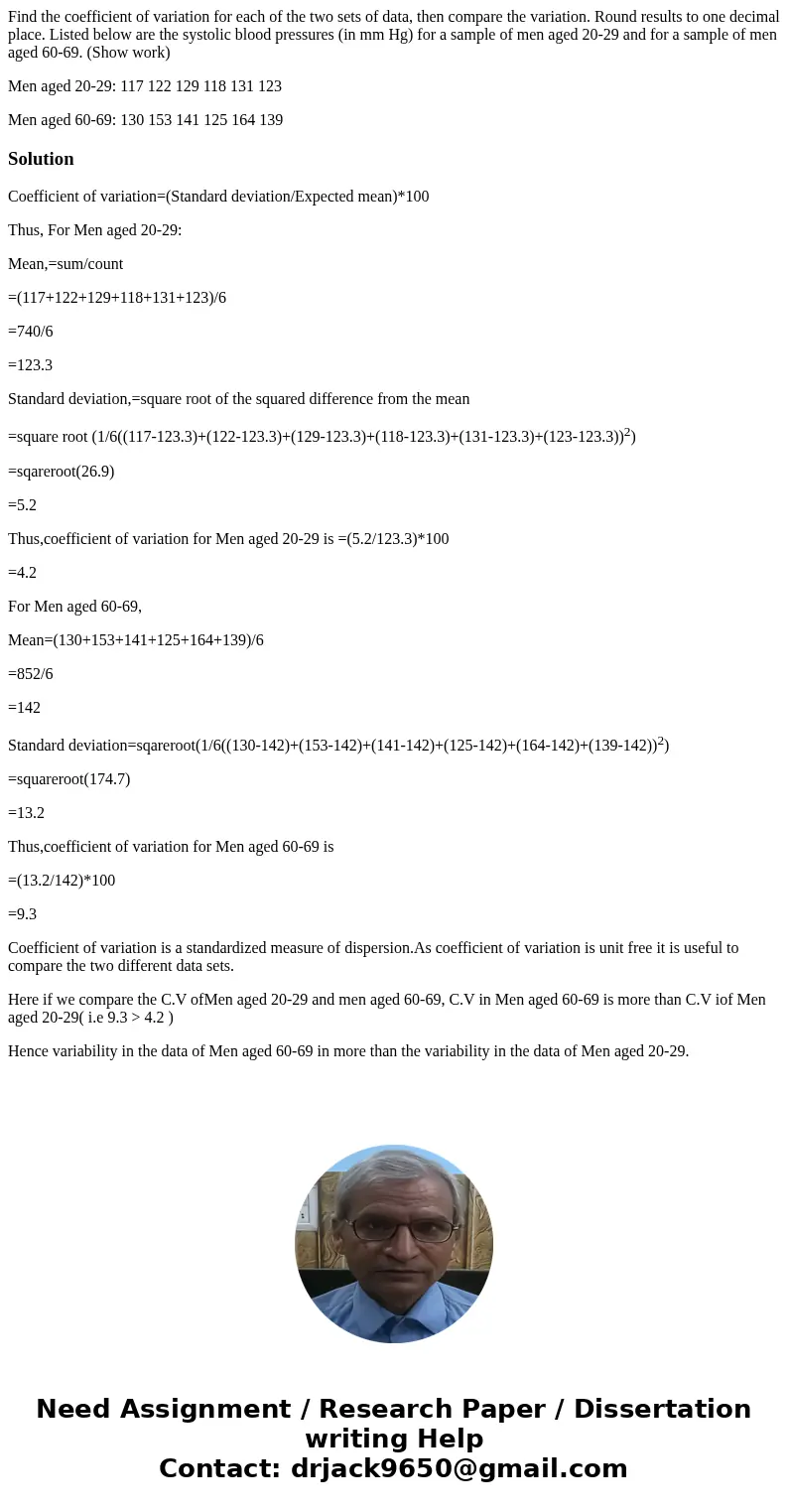Find the coefficient of variation for each of the two sets o
Find the coefficient of variation for each of the two sets of data, then compare the variation. Round results to one decimal place. Listed below are the systolic blood pressures (in mm Hg) for a sample of men aged 20-29 and for a sample of men aged 60-69. (Show work)
Men aged 20-29: 117 122 129 118 131 123
Men aged 60-69: 130 153 141 125 164 139
Solution
Coefficient of variation=(Standard deviation/Expected mean)*100
Thus, For Men aged 20-29:
Mean,=sum/count
=(117+122+129+118+131+123)/6
=740/6
=123.3
Standard deviation,=square root of the squared difference from the mean
=square root (1/6((117-123.3)+(122-123.3)+(129-123.3)+(118-123.3)+(131-123.3)+(123-123.3))2)
=sqareroot(26.9)
=5.2
Thus,coefficient of variation for Men aged 20-29 is =(5.2/123.3)*100
=4.2
For Men aged 60-69,
Mean=(130+153+141+125+164+139)/6
=852/6
=142
Standard deviation=sqareroot(1/6((130-142)+(153-142)+(141-142)+(125-142)+(164-142)+(139-142))2)
=squareroot(174.7)
=13.2
Thus,coefficient of variation for Men aged 60-69 is
=(13.2/142)*100
=9.3
Coefficient of variation is a standardized measure of dispersion.As coefficient of variation is unit free it is useful to compare the two different data sets.
Here if we compare the C.V ofMen aged 20-29 and men aged 60-69, C.V in Men aged 60-69 is more than C.V iof Men aged 20-29( i.e 9.3 > 4.2 )
Hence variability in the data of Men aged 60-69 in more than the variability in the data of Men aged 20-29.

 Homework Sourse
Homework Sourse